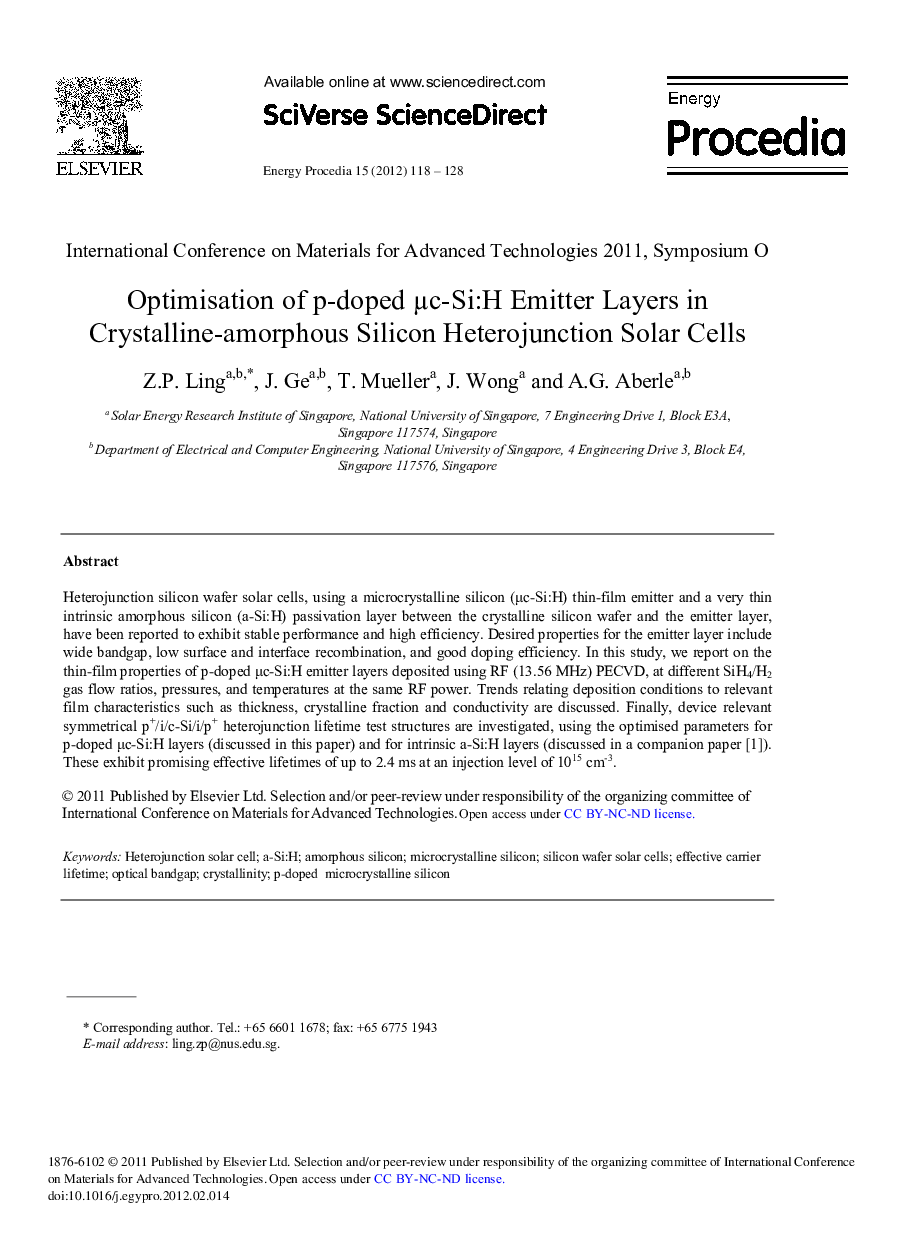| Article ID | Journal | Published Year | Pages | File Type |
|---|---|---|---|---|
| 1514053 | Energy Procedia | 2012 | 11 Pages |
Abstract
Heterojunction silicon wafer solar cells, using a microcrystalline silicon (μc-Si:H) thin-film emitter and a very thin intrinsic amorphous silicon (a-Si:H) passivation layer between the crystalline silicon wafer and the emitter layer, have been reported to exhibit stable performance and high efficiency. Desired properties for the emitter layer include wide bandgap, low surface and interface recombination, and good doping efficiency. In this study, we report on the thin-film properties of p-doped μc-Si:H emitter layers deposited using RF (13.56 MHz) PECVD, at different SiH4/H2 gas flow ratios, pressures, and temperatures at the same RF power. Trends relating deposition conditions to relevant film characteristics such as thickness, crystalline fraction and conductivity are discussed. Finally, device relevant symmetrical p+/i/c-Si/i/p+ heterojunction lifetime test structures are investigated, using the optimised parameters for p-doped μc-Si:H layers (discussed in this paper) and for intrinsic a-Si:H layers (discussed in a companion paper [1]). These exhibit promising effective lifetimes of up to 2.4 ms at an injection level of 1015 cm-3.
Keywords
Related Topics
Physical Sciences and Engineering
Energy
Energy (General)
Authors
Z.P. Ling, J. Ge, T. Mueller, J. Wong, A.G. Aberle,
